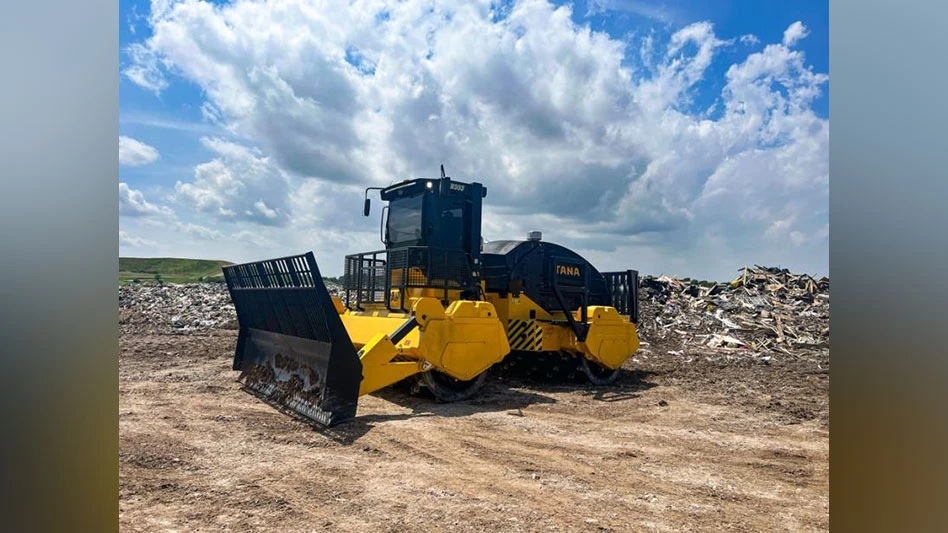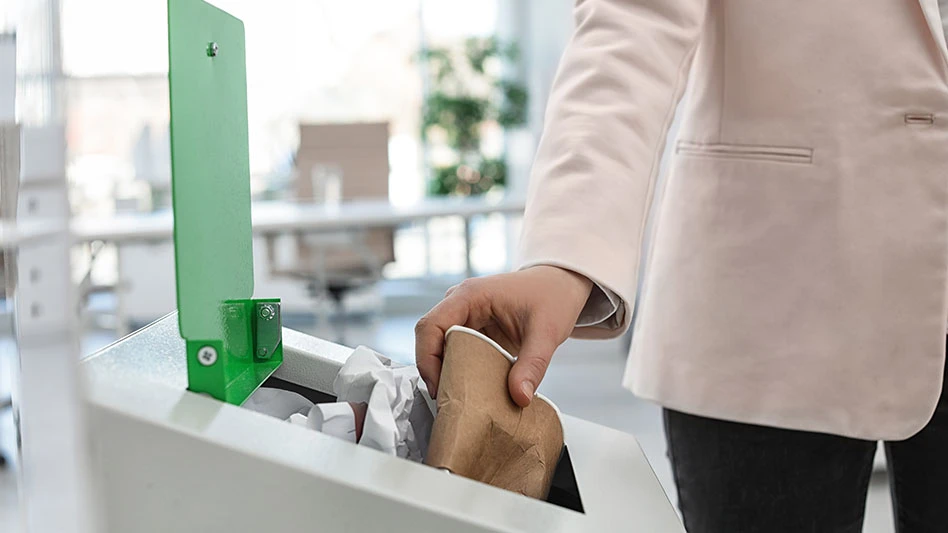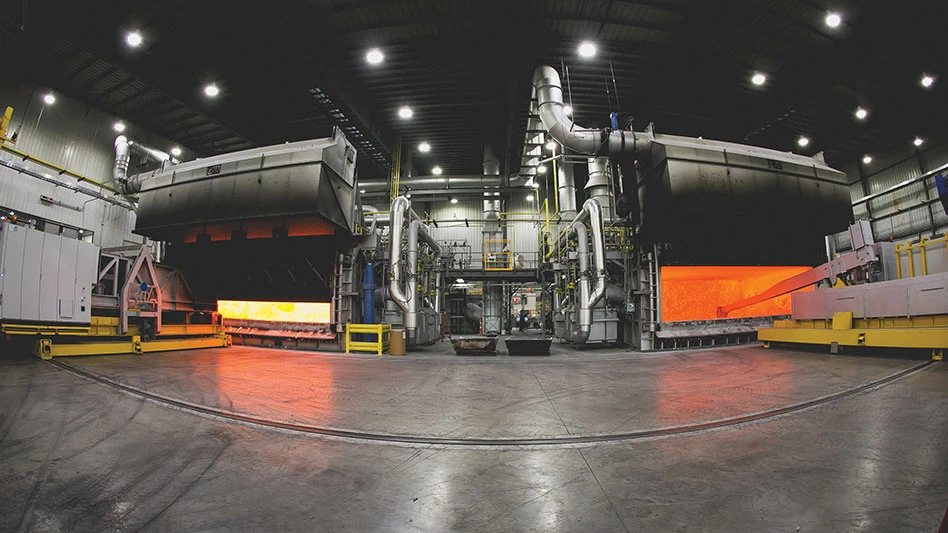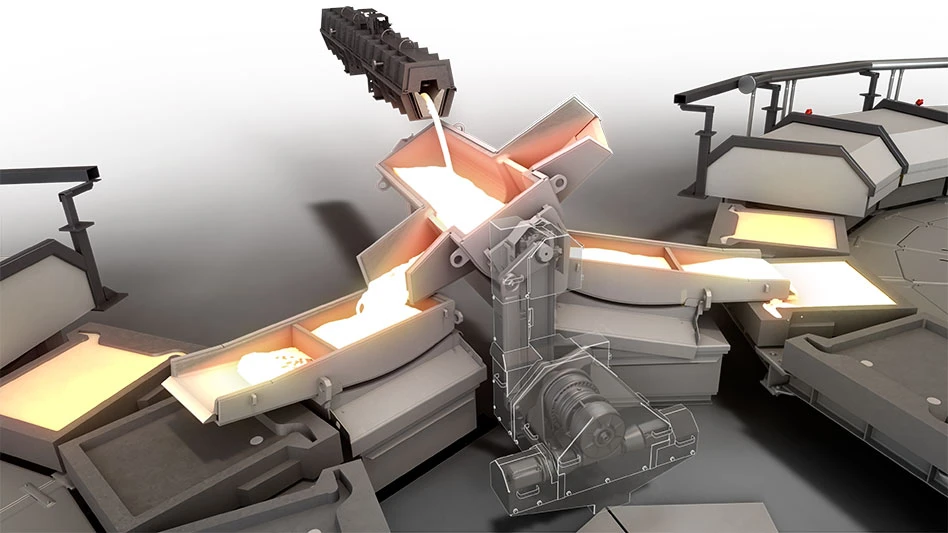If scrap handlers are the workhorses of the scrap recycling yard, skid steer loaders could be called the worker-ants. Drive past any scrap or recycling yard and you’ll probably see a swarm of these small, boxy machines with long arms that reach over their heads. It’s probably fair to say that the vast majority of the tons of material recycled each year in the United States has been moved about at one time or another by a skid steer loader.
These hardworking machines have been around since the late 1950s, when they were originally designed for moving dirt and gravel at construction sites. Owners and operators realized the potential to expand the machines’ usefulness, so many of them designed and built their own rough attachments. Soon, manufacturers came up with an array of manufactured attachments to do many different jobs.
Skid steer loader use in the recycling industry has really exploded in the last 15 years. "They can haul and load scrap, lift, grab, grind," says one skid steer manufacturer. "You name it, and a skid loader can probably do it."
While the basic uses for the machines haven’t really changed much in the last 15 years, the machines certainly have, says Jeff Ross, president of Madison Metals, Inc., Madison, South Dakota. "The machines have become bigger and stronger – they’ve changed to our advantage," he says. "They really weren’t built in the beginning for what we are using them for, but they’ve grown into a hard working machine that we use in the most rugged part of our business."
Ross remembers the early years when engineers from various skid steer loader companies came to his site to observe the machines working in his application. "We were tearing the machines up," he recalls, "so they changed things. Every year there were more improvements, changes to allow us to use them in different ways, to be able to pick up more weight, to have both bigger and smaller machines for different applications."
"I’m much happier with the newer models," adds Jordan Beck, owner of Mill Valley Recycling, Milwaukee. "They are bigger, stronger units with more power and better lifting capacity."
Because of those changes, skid steer loaders have become ideal for the recycling industry, says a skid steer supplier. "They are now highly maneuverable," he says. "They are much quicker because they can turn within their own radius, so their productivity is much higher." They also carry a lower initial investment cost than most larger wheeled loaders.
"The secret to the success of skid-steer loaders is that they are so versatile," agrees a skid-steer manufacturer. He also sees a trend to larger skid-steers, replacing loaders. "The skid-steer can not lift or handle in one load what a bucket loader can do, but skid-steers move faster so they are more efficient. Where space is at a premium, it is hard to maneuver a two-yard bucket."
Scrap yard or recycling businesses’ needs are much different from those of a contractor or landscaper, Beck points out. His company depends on skid steers to do a lot of different jobs: loading and unloading both boxes and scrap metal (including small, loose items like aluminum cans) on and off of trucks, general moving of large objects around the yard, sweeping, and even occasionally breaking concrete.
Ross adds to that list. Because his company specializes in recycling wire and cable, he needs a machine that can grab wire and pull it from a truck or trailer and feed it onto a moving conveyor belt. And, he points out, in northern states such as South Dakota, facilities like his need a skid steer just to move all the snow that falls in the winter months.
ATTACHMENTS
Among the changes that have made skid steers so much more applicable to the recycling industry is the range of new attachments that have been developed to meet industry-specific needs, such as recycling/industrial grapple buckets, hydraulic shears, and forks.
Recycling/industrial grapple buckets can be compared to a giant clam with jaws that open and close for grabbing. Beck says this attachment the mainstay of his skid steer fleet. "We use it to grab a pile of aluminum cans and transfer them to a truck," he says. He points out that the jaws prevent the small items in the load from spilling all over the ground during transit.
Hydraulic shears are another attachment commonly used in scrap operations. When you are moving lengths of cable you need a way to cut it, and the shear acts as a giant, mechanical scissors, says Ross.
Forks turn the skid steer loader into a forklift for lifting, moving and stacking boxes or other large items found in a scrap yard such as pallets.
One manufacturer notes the popularity of quick-change arrangements which allow a recycler to use a bucket-equipped skid-steer at one end of a line to load material and then, with a change to a pallet fork, replace a fork lift at the other end.
Also popular is the use of a small excavator equipped with a "thumb" for sorting material. The thumb attaches underneath the bucket and works like a clamp to hold material in the bucket.
The scrap recycling industry is hard on its equipment. "I don’t think it gets any tougher," Beck says. "The weight, the shape of the materials we move – it’s not easy."
Ross agrees. "We use our skid steers a lot, and hard," he says. "We put about 2000 hours a year on each one, where the average use per year is about 500 hours."
Choosing the right tires is also key for skid steers, as recycling and demolition projects demand tough equipment that can handle difficult terrain.
"Tires are the number one expense in operating a skid steer, next to the operator and fuel," says Buck Hill, president of SETCO Solid Tire and Rim, Idabel, Okla. "Solid tires can run up to 3,000 hours on skid steers in a scrap or recycling environment." For this reason, solid tires are standard on skid steers used for these applications.
SAFETY AND MAINTENANCE
Maintenance, of course, is critical when a machine is used so heavily to do such demanding work. But today’s generation of skid steers is up to the task if they’re given basic care.
"Grease, oil, filters and keeping an eye on the fluids is important," says Beck, especially in an environment where there’s a lot of dust. "In our application we have to put solid tires on them, since rolling over scrap metal chews up regular tires."
Both Mill Valley and Madison Metals replace their machines every three years, although Ross uses one machine that’s five years old. "Three years is a good span," says Beck, "because things start to wear, and then I can upgrade and get any new applications."
Any time you are using moving equipment, safety is a big factor. Inexperienced or careless operators can get in a lot of trouble. The industry has addressed that issue, not only in the design of the machines with operator protection devices built in, but also in a list of safety procedures in the manual for each machine.
One constant concern is making workers aware of the machine. Four-way flashers and rotating beacons are replacing back-up horns in many tight enclosures. Some manufacturers are offering optional rearview mirrors for their machines. The mirrors can be paired and give the operator an added degree of safety and visibility. "We don’t want to discourage the operator from turning around when backing," says a manufacturer, "but the mirrors keep ground workers in the driver’s peripheral vision."
The operator needs to worry about personal safety, too. Skid steer loaders make a lot of stops and starts. "Just using common sense goes a long way with safety," notes another manufacturer. "Each machine has a seat belt. Our machine has an operator restraint bar. Wear the belt and be sure the safety equipment is in good operating order."
"We have only experienced operators, and we send them all to the Institute of Scrap Recycling Industries’ safety classes," says Beck. "We follow all their recommended procedures, and the operators wear hard hats, safety glasses and steel-toed shoes."
Both Beck and Ross say their skid loaders are invaluable in their businesses. "They’ve become such a versatile piece of equipment, they are just something I really can’t get along without," says Beck.
Ross agrees. "The skid loader is the most important piece of equipment in my type of recycling business," he says. "It’s like having another person there every day – we use them constantly."
PURCHASE CONSIDERATIONS
If you are looking to purchase a skid steer loader, there are a number of factors to consider. For one, look at the size of the loads you need to move before you choose a loader so you get one that’s the correct size for your job. You may need several sizes for different applications.
Consider the attachments you need in your operation and make sure what you purchase will do the job. Also consider maintenance and ease of service on the machine; choose a machine that is designed to be easily serviced.
Look at ease of operation and operator comfort. Visibility is critical if your machine is working in a confined area. Also, make sure the machine is sturdy enough for your application since much of scrap recycling use is tough on equipment.
Finally, calculate the life-cycle cost of the machine, not just its original purchase price. Durability and dependability may end up being more important than original cost.
Moore is skid steer loader product manager for Gehl Construction Equipment, West Bend, Wis. Harler is an environmental writer based in Strongsville, Ohio.
Get curated news on YOUR industry.
Enter your email to receive our newsletters.

Explore the July 1997 Issue
Check out more from this issue and find your next story to read.
Latest from Recycling Today
- Unifi launches Repreve with Ciclo technology
- Fenix Parts acquires Assured Auto Parts
- PTR appoints new VP of independent hauler sales
- Updated: Grede to close Alabama foundry
- Leadpoint VP of recycling retires
- Study looks at potential impact of chemical recycling on global plastic pollution
- Foreign Pollution Fee Act addresses unfair trade practices of nonmarket economies
- GFL opens new MRF in Edmonton, Alberta









